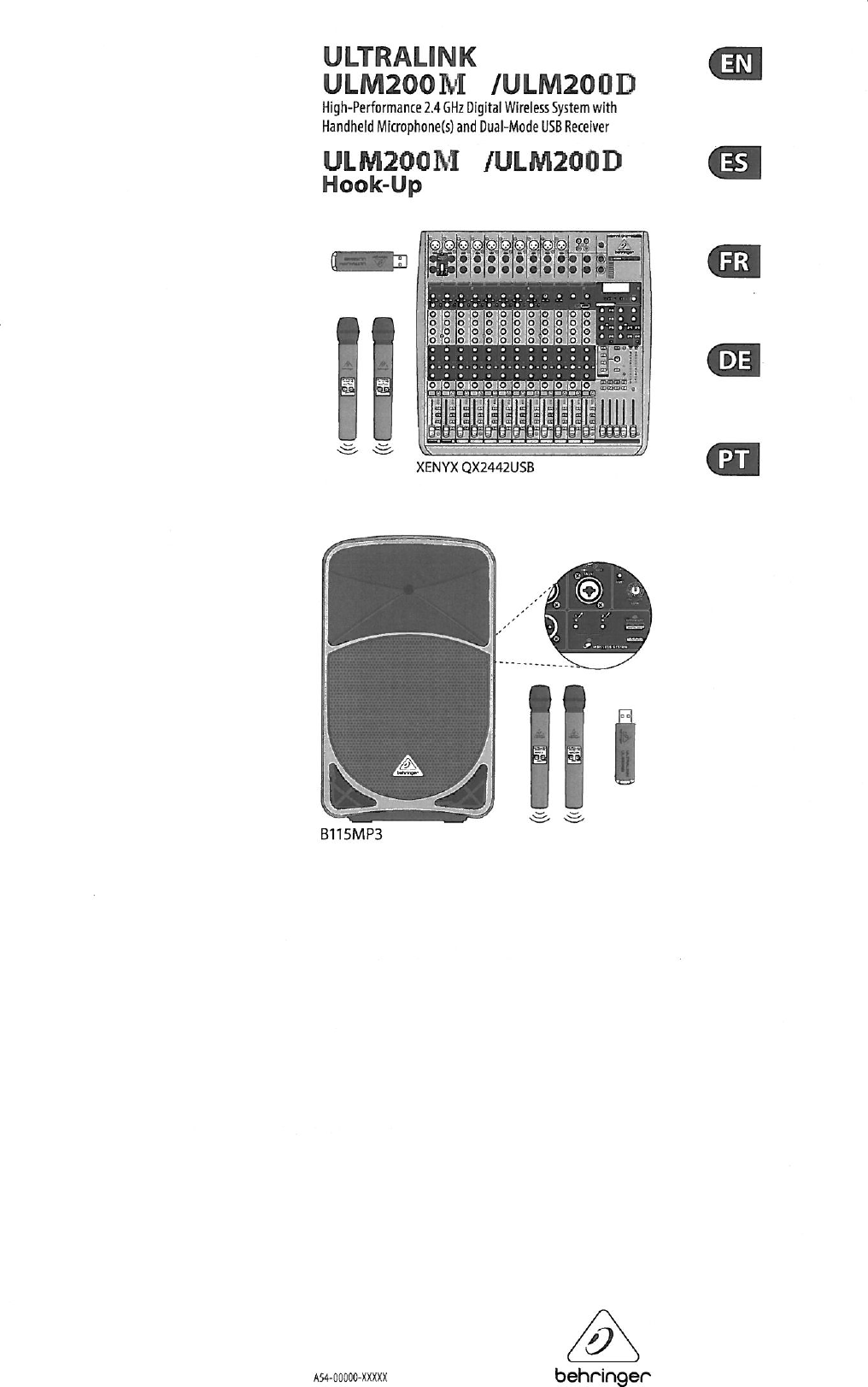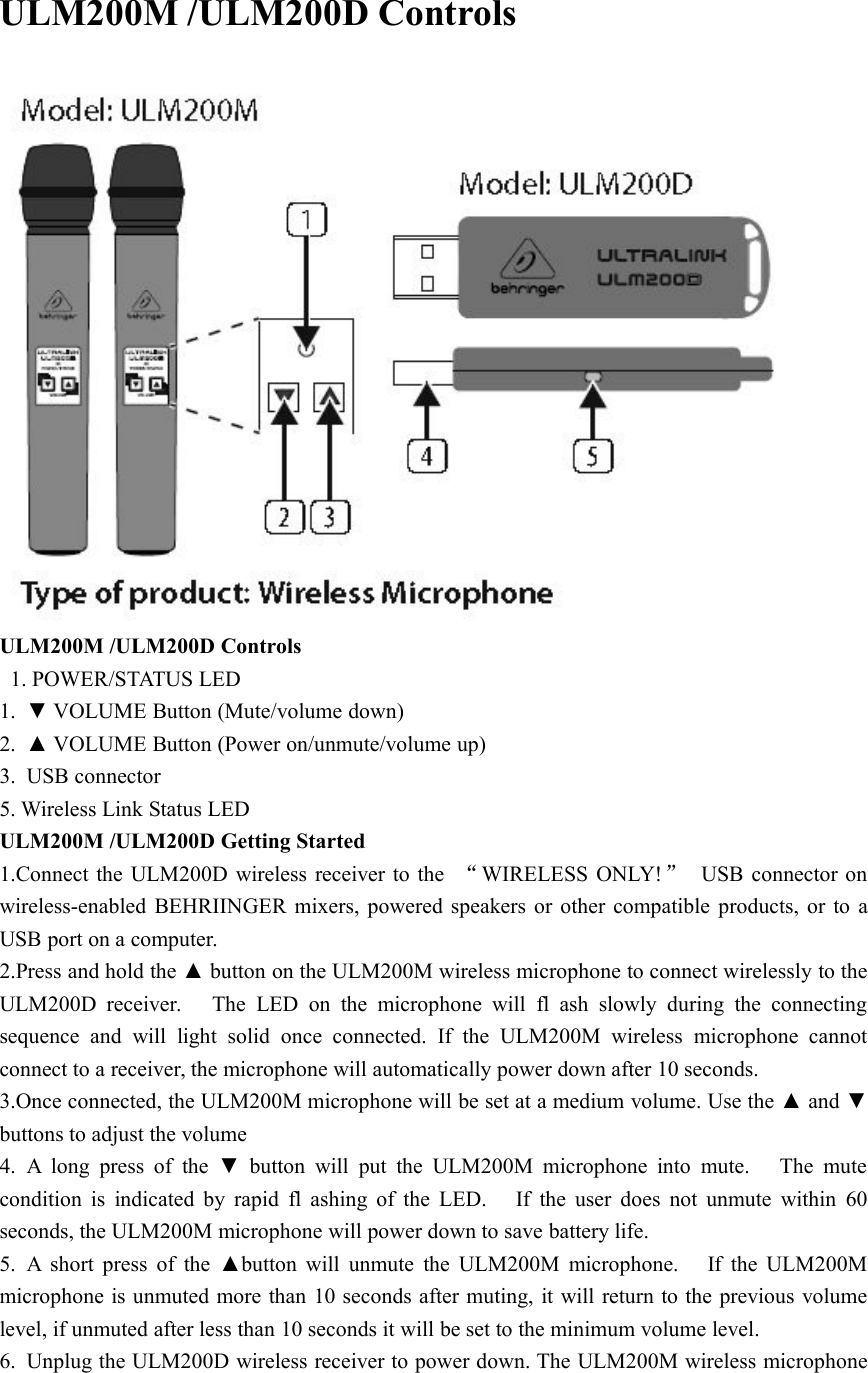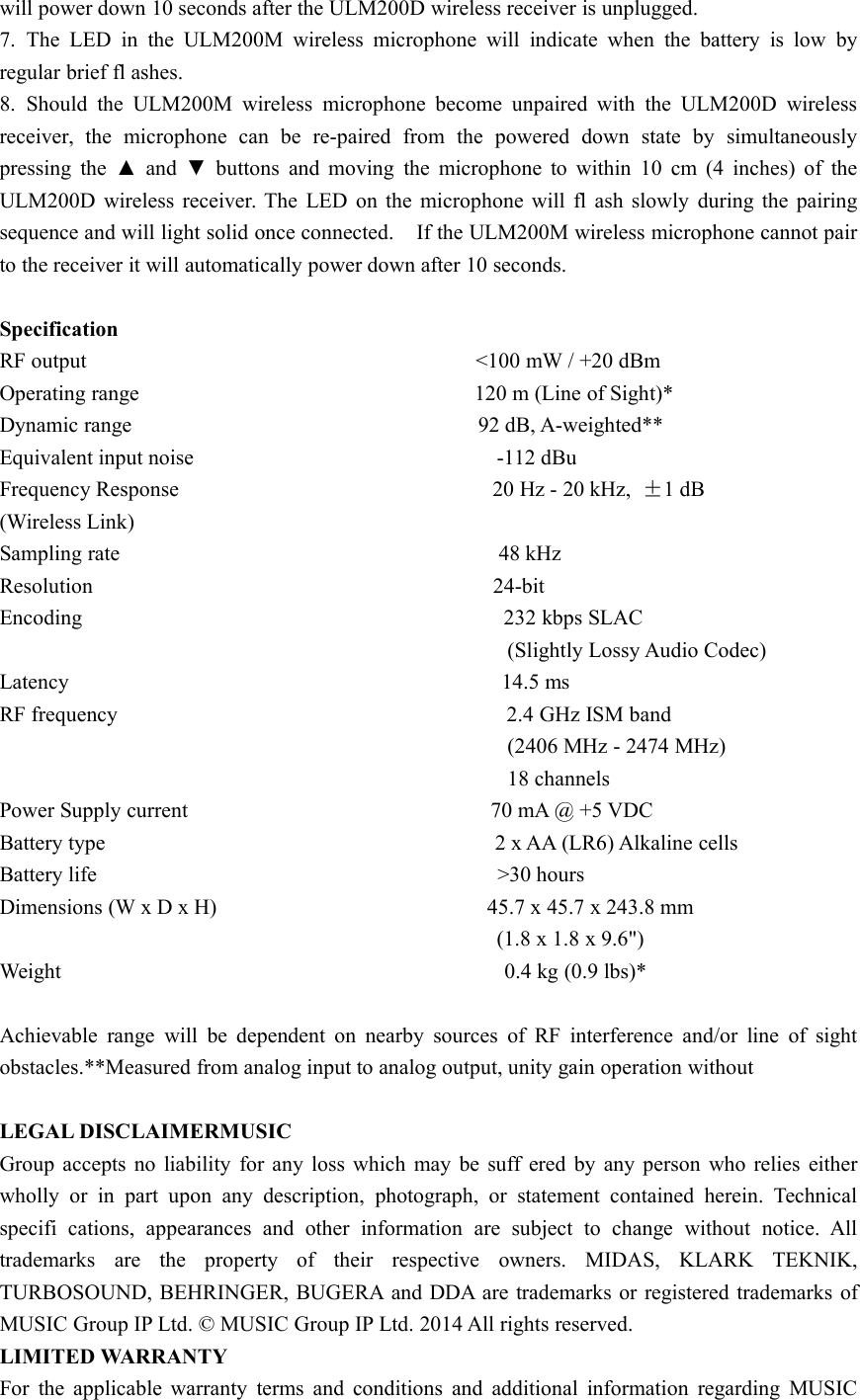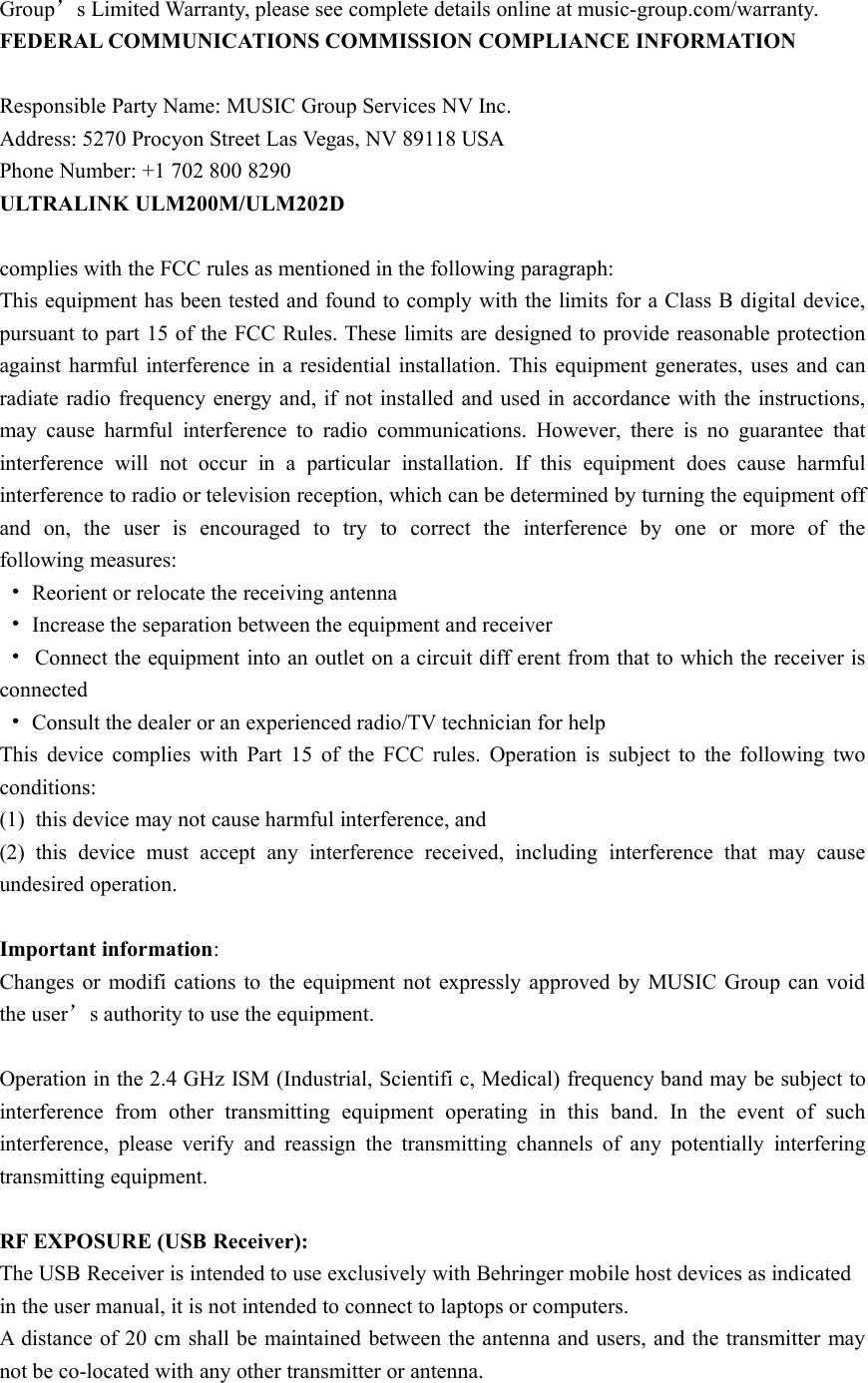Music Tribe Commercial MY Sdn Bhd ULM200D01 USB Wireless Microphone Receiver User Manual ULM200M ULM200D Controls
MUSIC Group Services PH Corp USB Wireless Microphone Receiver ULM200M ULM200D Controls
Contents
- 1. Manual r1
- 2. Addendum
- 3. Manual
Manual r1



